Introduction
Legal industry rankings are an important benchmarking tool for buyers of legal services. They offer a clear indication as to which law firms and lawyers are most active, have the highest market reputation, and are working on the most significant legal matters – an independent seal of quality and assurance.
Increasingly, diversity and inclusion policies have become a consideration in the selection of outside counsel. Using data driven analysis of the latest rankings, this Legal Media 360 special report assesses gender diversity at domestic law firms in Japan.
The report examines data at three levels: 1) firm wide; 2) by practice area; and 3) by individual lawyer rankings. It will reveal:
- Which firms are most gender diverse;
- Whether gender diverse firms are more successful than male dominated firms;
- Whether female lawyers are being afforded the same opportunities as men; and
- If rising star data implies a more gender balanced future.
Methodology
Results are based on the analysis of lawyer rankings in the following international publications: asialaw, Benchmark Litigation, Chambers and Partners, IAM1000, IFLR1000, IP Stars, Legal 500, and World Trademark Review 1000. These have been selected based on their multilateral research process, where peer and client reviews as well as submissions are used to determine the rankings.
For the purposes of this report, due to the variance in the categorization at atomic levels, lawyer rankings have been reclassified by Legal Media 360 to bring them together in a common scale without distorting the differences in the range of the values. This has been achieved by referring to the definitions provided by the publications.
Lawyers have been grouped on a six-tier scale:
- Senior Statesperson:Retired/semi-retired influential lawyers with close relationships with major institutional clients. Mainly work as a consultant.
- Band 1 (1.0 to 1.9): Leading lawyers who have an outstanding reputation and a strong track record for leading the most significant matters.
- Band 2 (2.0 to 2.9): Highly regarded lawyers who are active on significant matters.
- Up and Coming Partner:Partner level lawyers establishing their reputation and have been recognised for leading/assisting on significant matters. Potential to be a tiered lawyer in the future.
- Rising Star:Junior lawyers establishing their reputation and have been recognised for assisting on significant matters. Potential to be a tiered lawyer in the future.
- Notable practitioner:Lawyers who have had some market recognition and been on some notable matters. Not yet a tiered lawyer.
The 2023 dataset covers rankings published from January to December 2022.
Findings
Overall Gender Statistics
In the eight publications examined, a total of 585 lawyers in Japan were recognized.
The national average male-to-female ratio for Japan law firms is 84 to 16 percent, which, as can be seen from the charts, is well below the overall Asia average of 70 to 30 percent. In addition, among the 18 Asian countries analysed by Legal Media 360, Japan has the second-largest gender imbalance in favour of men.
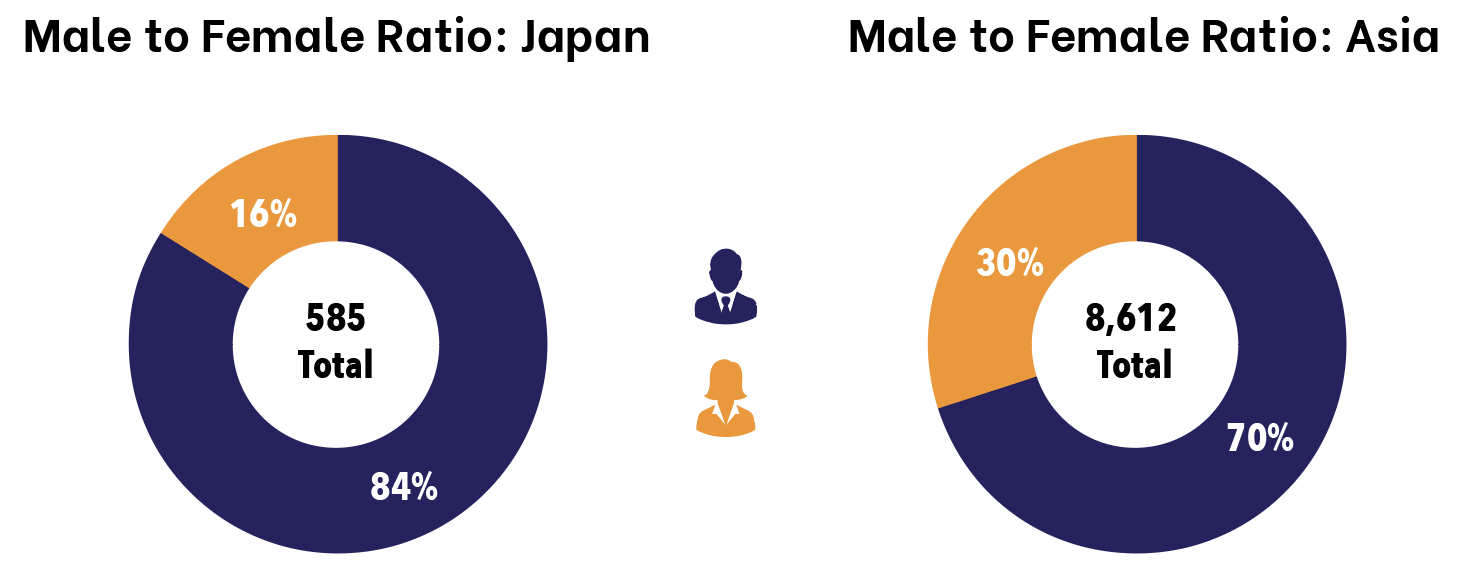
Firm Level
Top 10 Firms with the Most Lawyer Recognitions
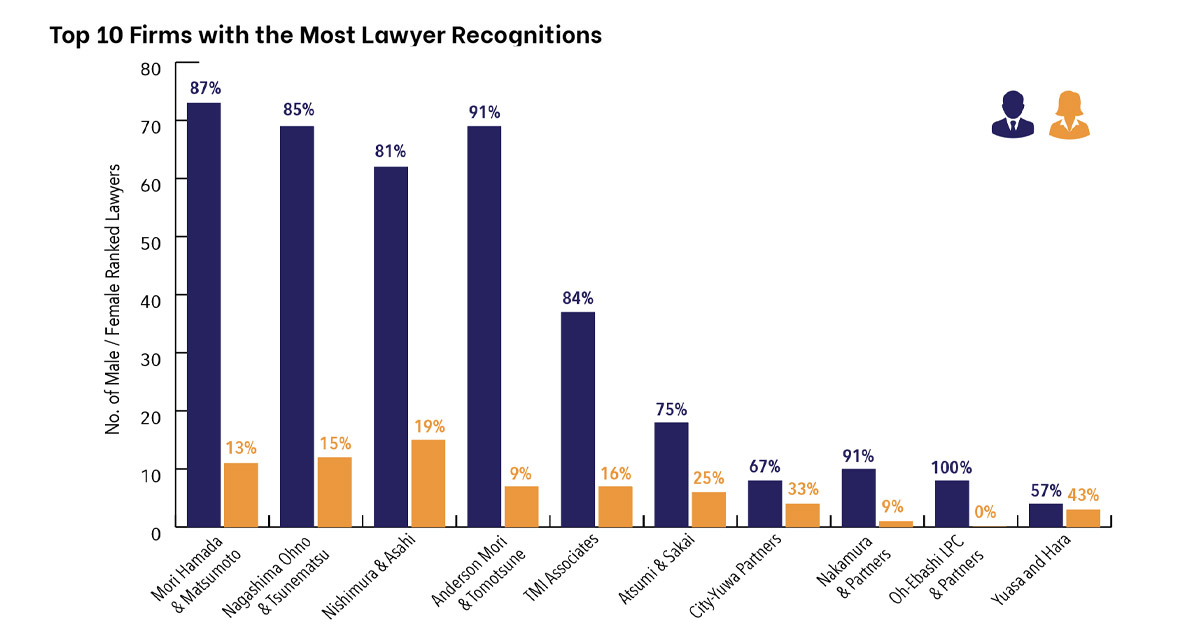
Practice Area Level
Gender Representation by Practice Area
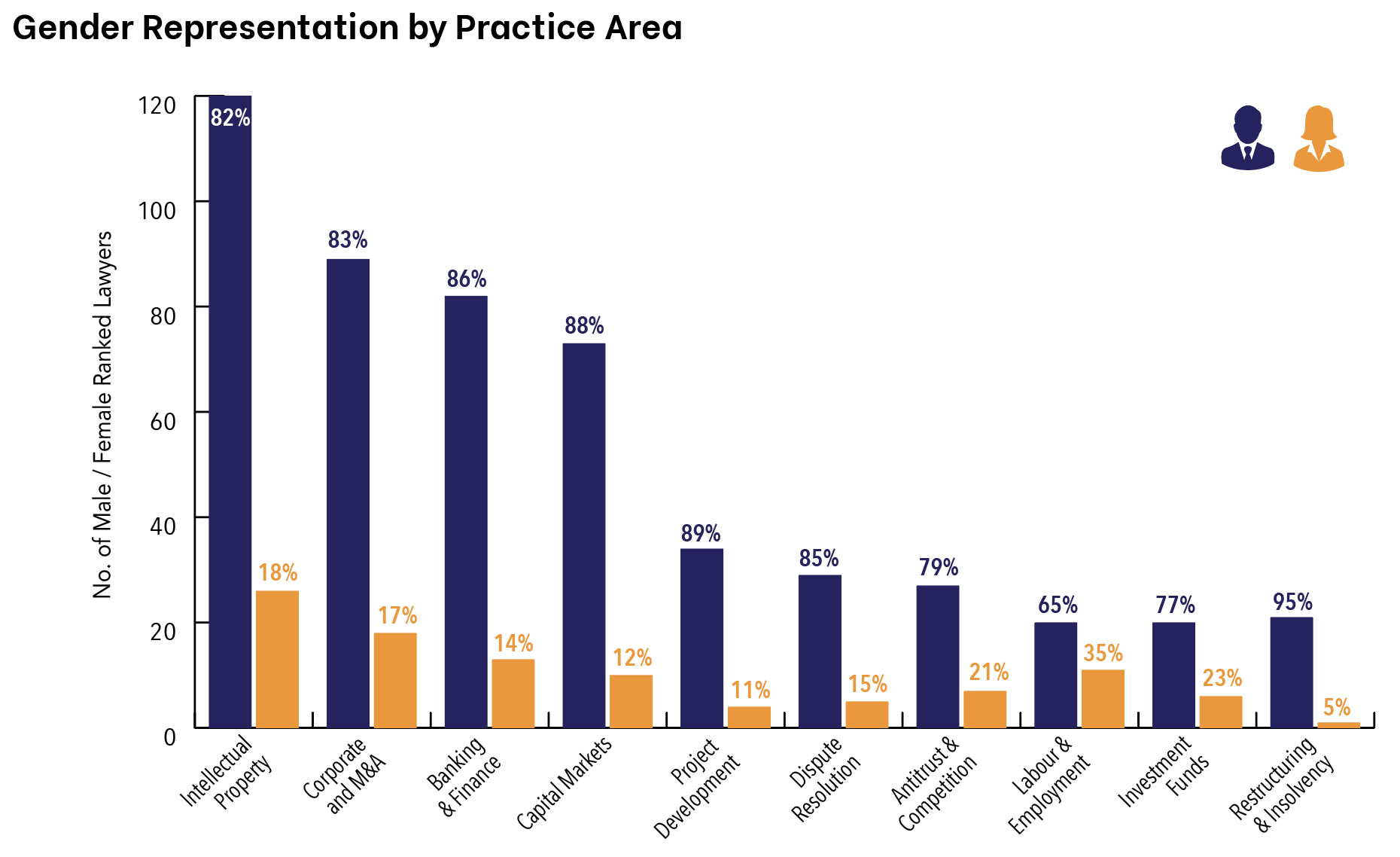
Lawyer Levels: Gender
Breakdown of Gender by Tier
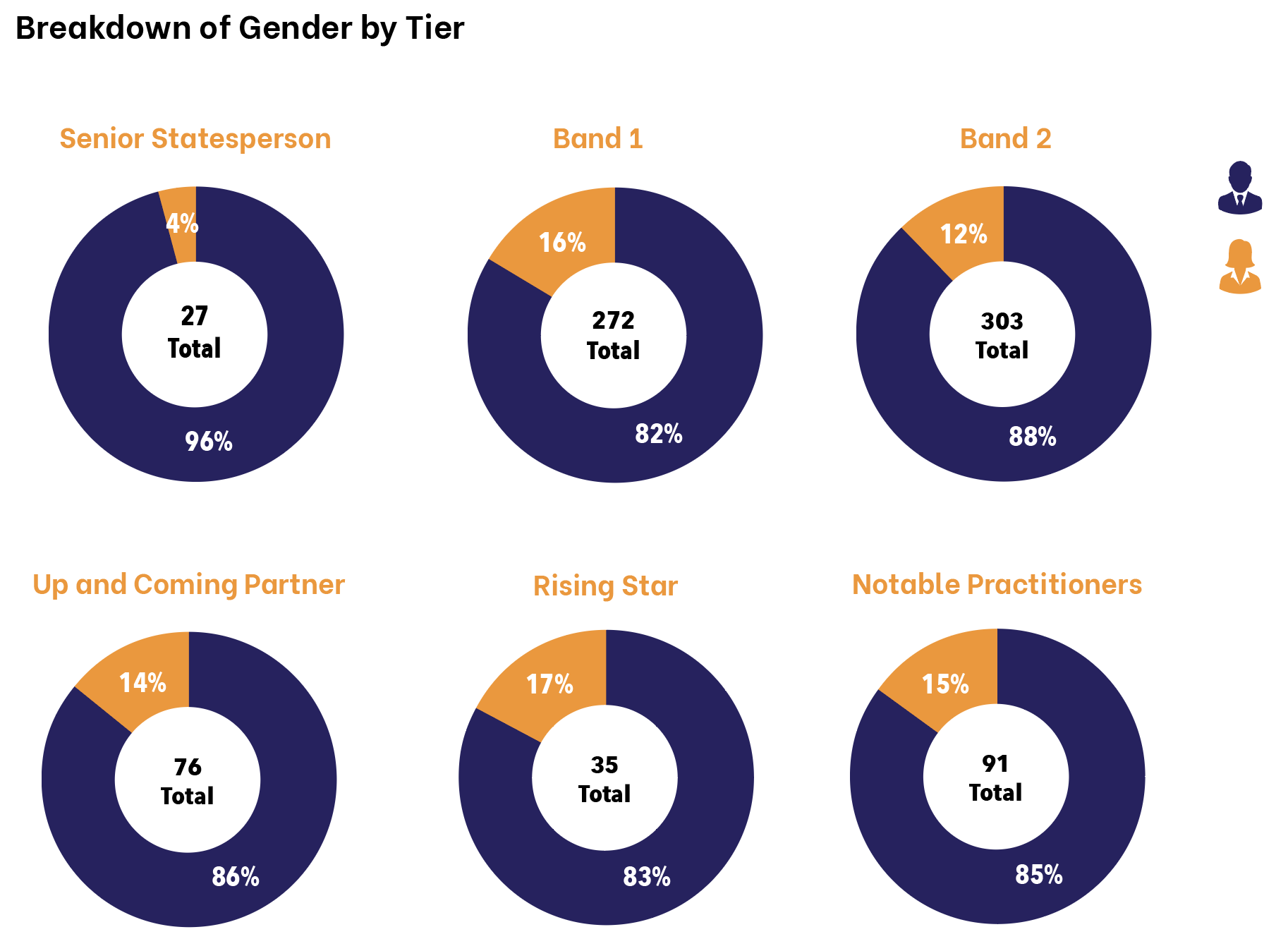
Commentary
Gender imbalance in Japanese law firms can be attributed to several factors, including societal norms, cultural expectations, and workplace dynamics. Here are some key factors that contribute to the gender imbalance:
- Traditional Gender Roles: Japanese society has traditionally upheld strong gender roles, with expectations that women prioritize their role as wives and mothers. This perspective has influenced the career choices of many Japanese women, leading them to opt for more traditionally "female" occupations or to leave the workforce after marriage or childbirth.
- Long Working Hours: Japanese law firms are known for their demanding work culture, characterized by long working hours and a heavy emphasis on dedication and loyalty. This work style often clashes with societal expectations for women to prioritize family and domestic responsibilities, making it challenging for women to balance their personal and professional lives.
- Limited Career Progression: Law firms in Japan often have a hierarchical structure, where seniority plays a significant role in decision-making and career advancement. This structure can make it difficult for women to advance to leadership positions, as they may face barriers to promotion and opportunities for mentorship.
- Male-Dominated Culture: Japanese law firms have traditionally been male-dominated, with a deeply ingrained culture that may perpetuate gender biases and stereotypes. This can create a challenging environment for women, where they may face discrimination, implicit bias, or exclusion from informal networks and opportunities for professional growth.
- Maternity and Childcare Challenges: The lack of supportive policies and infrastructure for working parents, particularly mothers, can also contribute to the gender imbalance. Although progress has been made in recent years, challenges such as limited availability of affordable childcare, long work hours, and a lack of flexible work arrangements can make it difficult for women to balance their professional and family responsibilities.
Efforts are being made to address the gender imbalance in Japanese law firms. Some firms are implementing initiatives to promote gender diversity, such as introducing flexible work arrangements, providing mentoring programs, and raising awareness about unconscious bias. However, significant cultural and structural changes are needed to create a more inclusive and equitable environment for women in the legal profession in Japan.
As the Breakdown of Gender by Tier chart shows, there is no indication of any shift towards more gender balanced future within the younger generation of lawyers.
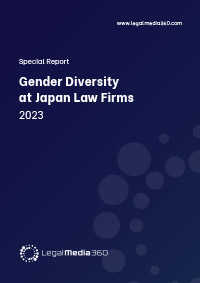
Download report in PDF format.
